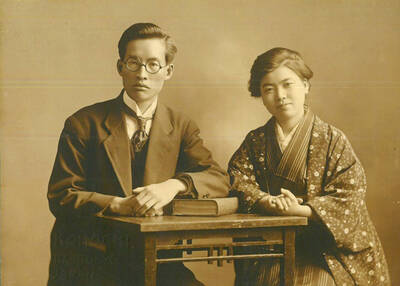Goya y Lucientes (1746 to 1828) is one of those towering figures whose vision and achievements still loudly echo down the centuries -- a colossus like Shakespeare or Dickens, at once emblematic of his place and times and thoroughly modern. Just as Goya's etchings known as Los Desastres de la Guerra convey for the first time the full, blood-soaked awfulness of combat, so do the phantasmagorical images of his iconic Black Paintings -- an abandoned dog peering into the abyss, a demented Saturn devouring one of his own children, a pair of embattled men locked in a primordial feud -- look forward to the existential terrors of our own age.
Robert Hughes' dazzling new study of Goya not only conveys the range and prescience of the artist's work with enormous acuity and verve, but also conjures the world of 18th- and early 19th-century Spain with vivid, pictorial ardor.
Writing in fierce, tactile prose, Hughes jolts the reader into a visceral appreciation of Goya's art, while at the same time situating Goya's work against the historical backdrop of Spain's harrowing war with Napoleon and the country's sufferings under a series of ineffectual and backward rulers.

Hughes deconstructs Goya's masterly technique, from his use of light and shadow to his framing of often chaotic subject matter with strict, geometrical compositions. And, most important, he communicates the moral urgency of Goya's art and its remarkable eloquence and scope: its determination to bear witness to the great historical subjects of the day while tackling the full spectrum of folly and joy and torment that is the human condition, an audacious ambition sadly lacking in so much of contemporary art.
There were many different Goyas, of course: Goya the court painter, the dutiful servant of kings; Goya the master portrait painter, a meticulous observer of fashion and gesture and class; Goya the satirist and scourge, assailing war and injustice and the sins of the Inquisition; and Goya the haunted pessimist, chronicler of insanity, madness and violent death.
Hughes explicates the relationship between these many Goyas, showing how the painter developed over the years, even as he debunks the many myths that have sprung up around the artist's life. Hughes reminds us that for all of his anticlerical fervor, Goya remained a Roman Catholic, and he argues that the painter was not mad, as popularly believed, only fascinated, like many under the spell of Romanticism, with madness as an extreme mental state and a part of the human condition.
Near the beginning of this volume, Hughes observes that Goya was both "one of the few great describers of physical pain, outrage, insult to the body" and "a mighty celebrant of pleasure."
"He loved everything that was sensuous: the smell of an orange or a girl's armpit; the whiff of tobacco and the aftertaste of wine; the twanging rhythms of a street dance," he writes. In retrospect, Goya is perhaps best described as a realist endowed with a tragic sense of life, an artist whose creed, in Terence's words, was "I think nothing human alien to me."
While images of pleasure pervade Goya's earlier work -- glimpses of men and women picnicking on the banks of a river, children frolicking in a garden, nubile women gazing flirtatiously at the viewer -- darker, more disturbing images came to predominate in the wake of a serious illness that left the painter functionally deaf after 1793. The deafness, as Hughes notes, meant isolation and immurement within "the silent prison of the self." It left Goya with the fear that he would no longer be "able to impose himself upon the world," heightened his sense of mortality and focused his imagination on "disaster and mayhem."
In fact, as Goya's work grew more inward and expressionistic, it became freighted with nightmare visions: a picador being horribly gored and tossed by a furious bull; shipwreck survivors gasping for life in a roiling sea; murderous bandits threatening a group of terrified travelers; madmen crudely gesticulating in a prisonlike asylum; women being raped and murdered in a cavernous void.
Witches -- emblems of the superstitions many in Enlightenment-era Spain still clung to -- proliferate in Los Caprichos, and his oeuvre serves up other bizarre, enigmatic images as well: a huge, muscular giant rising over the Spanish landscape, like a god of war; a cadaver holding a piece of paper emblazoned with the single word "Nada" ("Nothing"); a quartet of hideous creatures -- perhaps the three Fates or Daughters of the Night, with a victim -- hovering over a chilly river landscape.
Many of the most alarming images belong to the Black Paintings, which covered the walls of Goya's farmhouse outside Madrid. They are images that reflect the despair Goya and other liberals felt after King Fernando VII was restored to the Spanish throne, and all that that event inevitably meant: "A weak but still absolute tyranny, the Church in the saddle, the Inquisition back, the Constitution erased."
Although a professor of art history has recently questioned Goya's authorship of those paintings, Hughes clearly has no patience for such theories, arguing that the works are "not only among the most dramatic painted images Goya ever made," but also his "most private by far": "He had no audience in mind. He was talking to himself."
Those paintings, like Los Caprichos and Los Desastres, attest to both Goya's radical modernity and his enduring mythic power -- his identity, as Hughes puts it in this galvanic volume, as "a true hinge figure, the last of what was going and the first of what was to come."

In the next few months tough decisions will need to be made by the Taiwan People’s Party (TPP) and their pan-blue allies in the Chinese Nationalist Party (KMT). It will reveal just how real their alliance is with actual power at stake. Party founder Ko Wen-je (柯文哲) faced these tough questions, which we explored in part one of this series, “Ko Wen-je, the KMT’s prickly ally,” (Aug. 16, page 12). Ko was open to cooperation, but on his terms. He openly fretted about being “swallowed up” by the KMT, and was keenly aware of the experience of the People’s First Party

Aug. 25 to Aug. 31 Although Mr. Lin (林) had been married to his Japanese wife for a decade, their union was never legally recognized — and even their daughter was officially deemed illegitimate. During the first half of Japanese rule in Taiwan, only marriages between Japanese men and Taiwanese women were valid, unless the Taiwanese husband formally joined a Japanese household. In 1920, Lin took his frustrations directly to the Ministry of Home Affairs: “Since Japan took possession of Taiwan, we have obeyed the government’s directives and committed ourselves to breaking old Qing-era customs. Yet ... our marriages remain unrecognized,

During the Metal Ages, prior to the arrival of the Dutch and Chinese, a great shift took place in indigenous material culture. Glass and agate beads, introduced after 400BC, completely replaced Taiwanese nephrite (jade) as the ornamental materials of choice, anthropologist Liu Jiun-Yu (劉俊昱) of the University of Washington wrote in a 2023 article. He added of the island’s modern indigenous peoples: “They are the descendants of prehistoric Formosans but have no nephrite-using cultures.” Moderns squint at that dynamic era of trade and cultural change through the mutually supporting lenses of later settler-colonialism and imperial power, which treated the indigenous as

Standing on top of a small mountain, Kim Seung-ho gazes out over an expanse of paddy fields glowing in their autumn gold, the ripening grains swaying gently in the wind. In the distance, North Korea stretches beyond the horizon. “It’s so peaceful,” says the director of the DMZ Ecology Research Institute. “Over there, it used to be an artillery range, but since they stopped firing, the nature has become so beautiful.” The land before him is the demilitarized zone, or DMZ, a strip of land that runs across the Korean peninsula, dividing North and South Korea roughly along the 38th parallel north. This